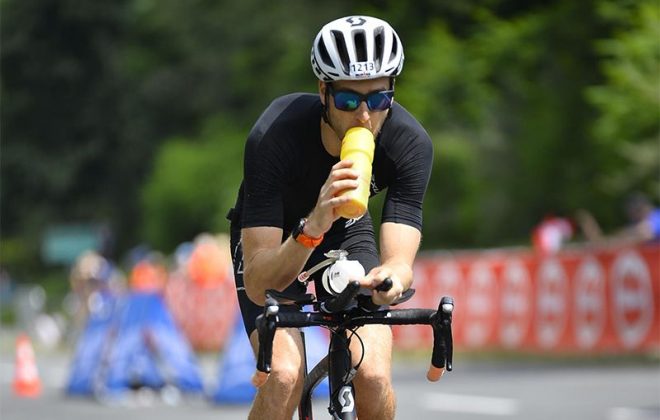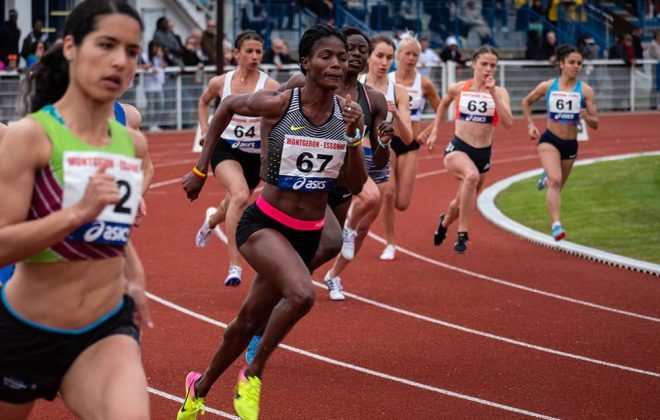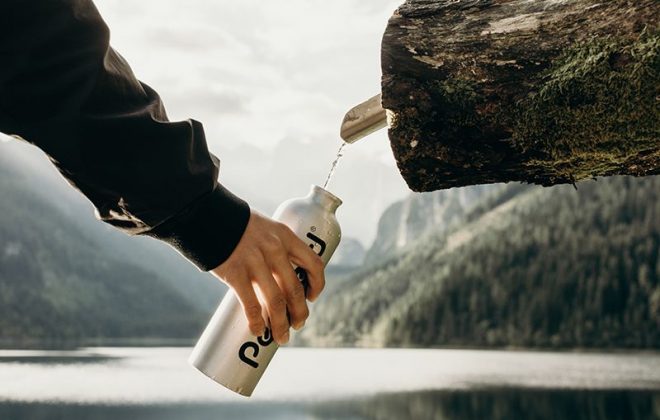14 Key Steps To An Effective Marathoner And Triathlete Diet
Everyone who’s ever tried to lose weight (and succeeded) knows – you can’t out-train bad nutrition. Poor eating habits equal limited results, be it weight loss or endurance training. Unless the marathoner or triathlete diet is optimized, results from training won’t meet expectations.
I’ve been there myself…
When I was training for my first marathon, I was only focusing on duration and frequency of my training sessions and didn’t pay much attention to my diet. Needless to say, the quality of those varied substantially.
Only once I got into triathlons and started testing various nutrition strategies things changed. I began to notice some patterns and made gradual diet changes that led to a quicker recovery and more energy.
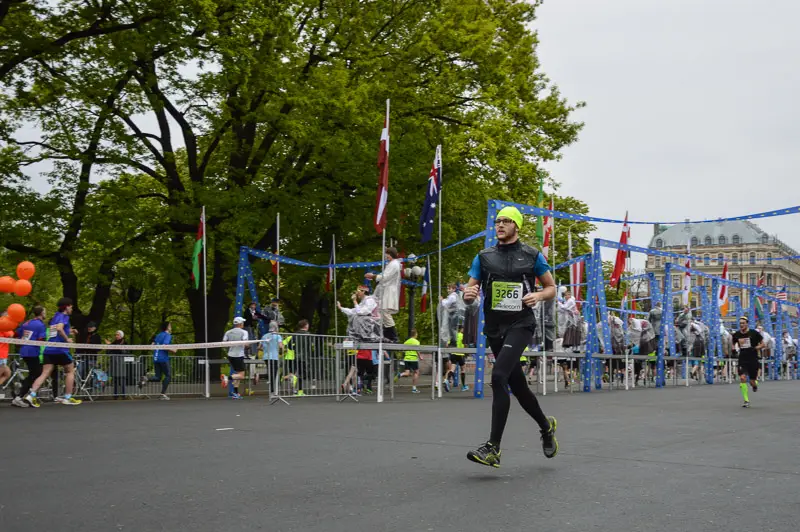
Effective marathoner and triathlete diet
The beauty of endurance sports is that our body can only sustain hard effort for 1.5 – 2 hours. Due to the limited amount of glycogen in our body, we are forced to slow down after that. And in that sense, triathlete diet is not that different from a marathoner diet. In both cases we are training for the race that will, most probably, take us more than 2 hours to complete.
This requires a lot of extensive effort to build a large aerobic base and make the body utilize less energy. However, that also brings constant mental and physical stress. Not to mention the added stress from the day job and family commitments. So,
Effective marathoner and triathlete diet has to be focused on clean and timely eating to recover fast and support extensive training.
In other words, the athlete has to replenish all that massive loss of calories, nutrients and water at the right time and with the right foods.
How to do it? Scroll down for my tips on how to optimize the marathoner or triathlete diet.
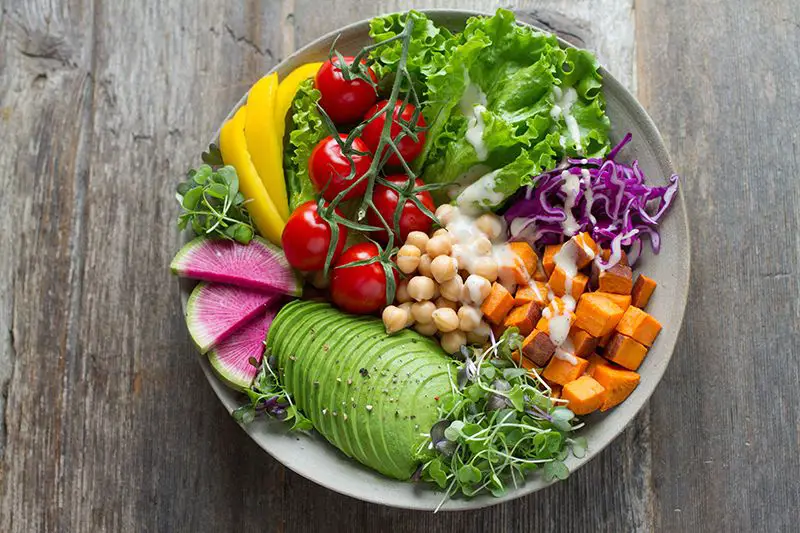
Step #1: Match meals with the schedule
One area where many athletes go wrong is food timing. Eating too close to the training session, not re-fueling correctly after or having a meal right before going to bed. All of this puts additional stress on the body and slows down recovery.
Instead, it’s better to consider what the body requires most at each particular time and which nutrients provide that. For example, energy (carbs) – most needed in the morning and before training, muscle building (protein) – after training and towards the evening. And so on.
It really doesn’t make sense to consume carbs before bed, unless you plan a high intensity training session at night. If you know what I mean…
Step #2: Avoid big late-night dinner parties
Eating a large dinner right before bed is like scheduling an update before turning off your laptop. It will take some time to finish before shutting down.
Depending on the food consumed, our bodies can spend up to 6 hours digesting the food before nutrients reach working muscles. Which means, a large meal eaten before bed (~2 hours) will mess up the quality of sleep.
And sleep is where the magic happens. In a fasted and complete rest state human growth hormone (HGH) release is at its peak. It’s the best time to recover nervous system and heal micro-traumas caused by training.
Step #3: Split the diet into smaller and more focused meals
Apart from timing of the meals it makes sense to also re-plan portion sizing and content as well.
Our bodies process carbs, proteins and fats in a different way. Each nutrient requires a different environment in the gut to digest the food (acid vs. alkaline). So, when all nutrients are eaten together, the body is having hard time processing either of the foods quickly and it takes longer for us to get the benefit.
The best strategy is to have smaller, but more frequent and targeted (protein-, carb- or fat-rich) meals to speed up digestion and reduce the stress on the body.
Step #4: Master the art of planning, preparation and batching
The biggest problem I personally had with nutrition was that I didn’t have a clue what I’d eat every time. I would much rather snack on something than spend my mental capacity thinking what to cook. Those snacks, most probably, were not something my body needed the most at those times.
I found that the best way to avoid such issues is to have systems in place to standardize the nutrition and eliminate errors. Like several go-to recipes that are quick to make. A weekly diet plan. And, most importantly, preparing food for the day ahead.
Or key ingredients for the week in advance…
Step #5: Track calories and macro nutrients to maintain weight and energy levels
The saying “what gets measured gets done” couldn’t relate better to nutrition. Those who consume more calories than needed will eventually gain weight. And vice versa. So, counting calories, testing how much an athlete needs and making changes is the first step to optimizing weight and energy levels.
The next step is to ensure balance, as calories are not created equal. Every food consists of macro nutrients that provide energy (carbs and fat) and building blocks (protein) to our body.
A healthy ratio for a marathoner/triathlete is: 60% carbs, 15% protein and 25% fat.
It’s important, however, to maintain balance and not drastically limit any one of the nutrients. That can seriously harm performance and health.
Step #6: Add more good fats to the diet
Adding fats to the marathoner or triathlete diet serves a dual purpose.
First of all, over time it reduces insulin sensitivity (so that body relies less on blood glucose). That helps the body to use fat better as a source of energy. Second, fats ensure a well-oiled blood vessels, as well as assist in proper functioning of the nervous system and the brain. Better nerves = less stress. Bingo!
However, try to limit the amount of saturated fat (like dairy), as it raises the level of LDL cholesterol (one that causes fat to accumulate inside organs and blood vessels). Also, try to stay clear of trans fats (like deep fried and artificial products), as they lead to formation of cancer cells.
Instead, try to eat more unsaturated fats, like avocados, nuts and various oils (especially olive oil with lots of Omega 9 and flaxseed oil with lots of Omega 3). Your body will thank you for that.
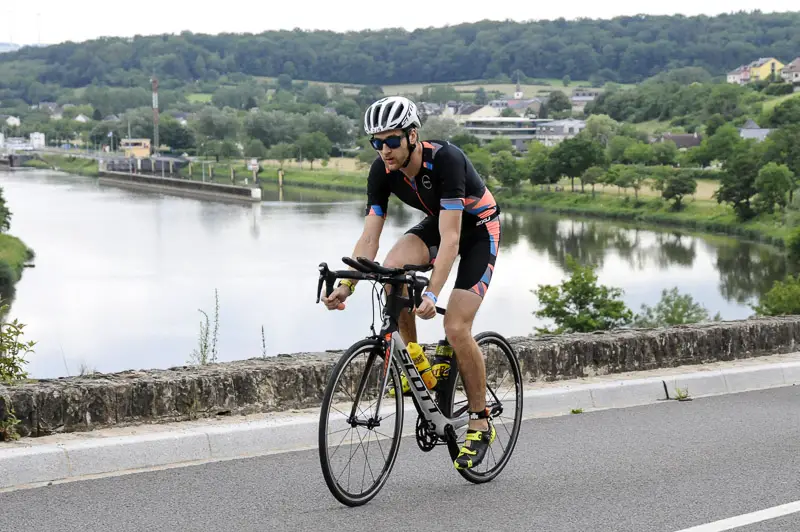
Step #7: Eat 2-3 hours prior to a high intensity training session
Something I learned the hard way is to fuel well for a hard training session. Eating right before an interval training or doing it on an empty stomach turned out to be a major no no.
During such training, the intensity is high and body operates in anaerobic or close to anaerobic mode. This requires a quick release of energy which body cannot provide, because there is no glucose in the blood – either because an athlete haven’t eaten or the food hasn’t been digested yet.
The best time for a meal before the training session is approximately 2 hours (3 if it’s a large meal) and it better contain carbohydrates if the intensity is high.
Step #8: Carb-load for the key long session
The main training session for any marathoner or triathlete is the long run or a bike ride. It can last anywhere from 1.5 to 5 hours and often includes race pace intervals. The purpose of these sessions is to train the body to go longer, faster and maintain the proper form.
It’s good practice to execute these key sessions after complete recovery and with full glycogen reserves to avoid running out of steam halfway. Completing this session while not being in the optimal condition will not provide expected training result. It will only burn more reserves and take a lot longer to recover from.
Carb-loading the day before is also a good way to test your race-day fueling plan. Win-win.

The Resilient Athlete
A Self-Coaching Guide to Next Level Performance in Sports & Life
Are you aiming to become a resilient athlete who is able to withstand any pressure? Be able to jump on any opportunity? Take any challenge life throws at you head on?
Then this book is for you.
Learn moreStep #9: Consume a light snack immediately after training session
In the first 15-30 minutes after a hard training practice it’s important to consume a small and sweet snack – like a fruit, candy or even an energy bar. The main point is to get a small amount of sugar into the system to replenish glycogen stores just enough to start the recovery process.
Don’t go crazy – this is not supposed to be a proper meal. Once the body has some energy to start recovering the damage, next on the agenda is a balanced meal with enough protein to provide some building blocks for the muscles.
Step #10: Consume adequate protein
Aside from topping up the glycogen stores through carb-loading it’s important to consume enough protein to allow the body to heal micro-traumas caused during training. And grow stronger
It’s very easy to under-consume protein during extensive training (especially if you’re on a vegetarian diet) and slow down recovery. Keep in mind,
Vegetarian sources of protein rarely contain all 9 essential amino acids. They have to be paired to form a complete protein.
For instance, beans or lentils need to be paired with bread/rice/pasta.
Step #11: Hydrate like never before
Hydration is extremely important both during and after training. What happens is that lack of water in our body signals the brain to slow down the production of energy and save effort. That, in turn, limits our performance.
So, it’s better to stay hydrated and sip water not only during training, but also throughout the day.
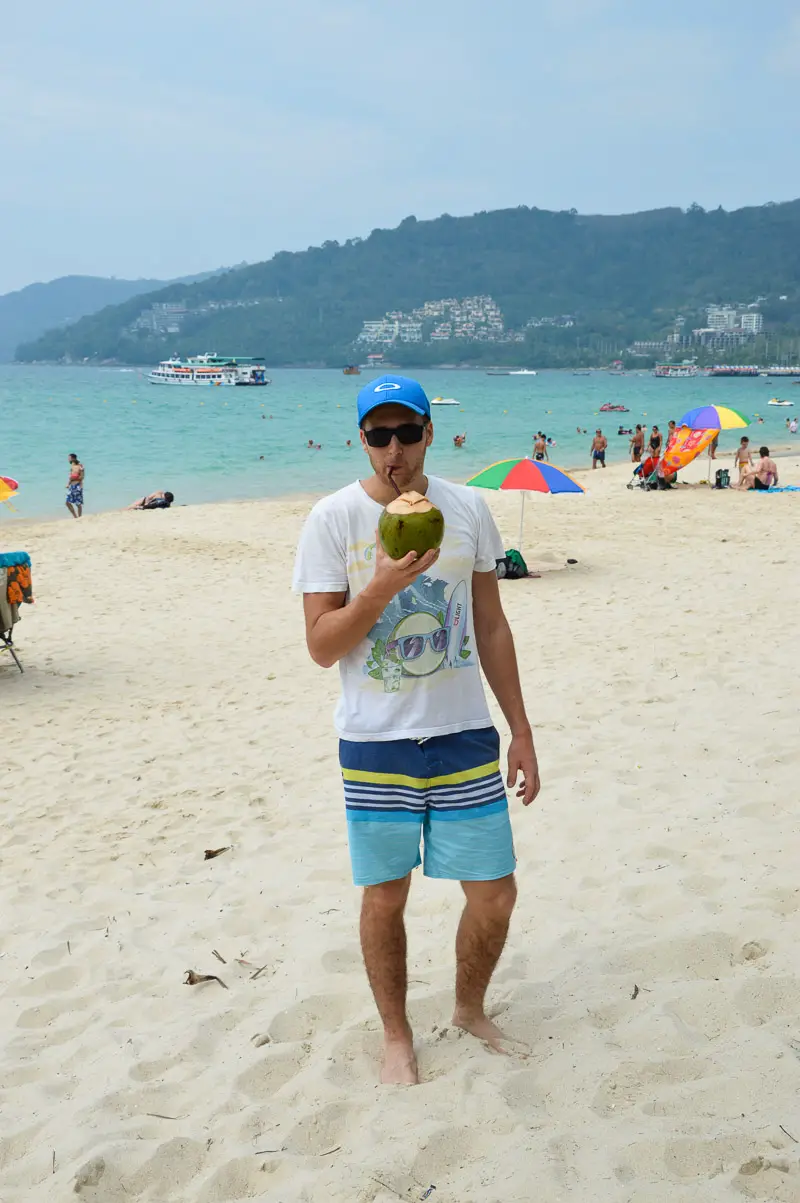
Step #12: Don’t forget about electrolytes
While almost everyone knows about the importance of water, fewer athletes know about the importance of electrolytes. During extensive training or while training in the heat athletes sweat a lot. With sweat we lose not only water, but also precious minerals, called electrolytes (sodium, potassium, calcium, magnesium, etc.).
This is why our sweat tastes salty.
These are critical minerals that help the body maintain it’s normal function. Sodium, in particular, is the most sensitive in the marathoner and triathlete diet, as it helps to transport the water from the gut to the working muscles.
As the sodium level drops, the body is not able to bring enough water to the muscles, which leads to loss of power and energy.
Very often in marathon and triathlon races athletes fell they are “hitting a wall” or developing muscle cramps after around 2 hours. Yet that is not necessarily because they ran out of glycogen. It can very well be due to insufficient intake of electrolytes during the race (in particular, sodium and magnesium).
Step #13: Consume simple sugars during long training sessions
Extended training sessions (over 90 minutes) require additional calories to be consumed. And at this point it doesn’t matter if the intensity is high or low.
Consuming simple sugars (like gels, sport drinks, fruits, candy) allow the body to replenish some glycogen lost during the exercise. Even if the athlete exercises at low intensity, he/she still requires blood glucose to support normal brain function.
Step #14: Create a varied triathlete diet to keep vitamins & minerals topped up
On top of macro nutrients, our bodies require micro nutrients (like vitamins and minerals) to stay healthy and function well. While a regular person can get away with a poor diet, endurance athletes burn more calories throughout the day. Their diets have to include as much variability as possible to get all the vitamins and minerals, because that is what helps the body to operate effectively.
The best way to think about it is to have half of your plate filled with vegetables and/or fruits of all possible colors.
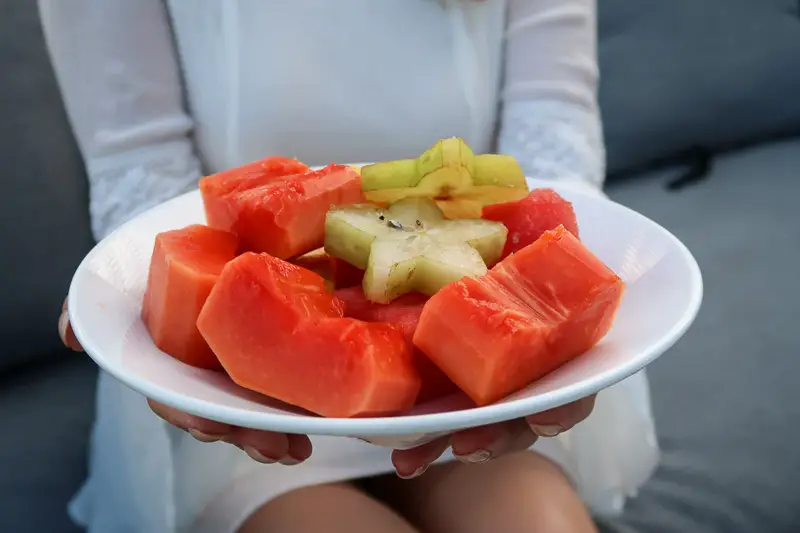
My sample vegetarian triathlete meal plan
On a closing note, I’ll share my triathlete diet plan I created and followed while training for a Half Ironman.
My training schedule is fairly constant and in general totals to roughly 7-10 hours of training per week. Over the years I learned that I feel good on roughly 3,000 – 3,500 Calories per day. Depending on the intensity and length, of course.
6:00 am: Morning snack (~300 Calories)
Avocado toast with tomatoes or a handful of dates and nuts
8:00 am: Breakfast – post training (600 Calories)
Granola with plant-based milk (almond, coconut) or Buckwheat porridge with chia seeds
10:00 am: Second breakfast (~300 Calories)
Smoothie with spinach, banana, almond butter, hemp protein and spirulina
11:30 am: Lunch (500 Calories)
Mixed vegetable salad with beans, nuts and bread
1:00 pm: Snack (300 Calories)
Homemade protein brownie
3:00 pm: Early dinner – post training (500 Calories)
Lentil Dahl with rice or Spaghetti with pesto
6:00 pm: Dinner (500 Calories)
Quinoa salad with hummus and avocado or Steamed vegetables with coconut oil and tofu
Total: 3,000 Calories
I prefer to exercise in the morning and during lunch, so usually by early afternoon I would consume most of my calories. During the active season I try to avoid eating after 6 pm, which provides a long fasting window until next morning to optimize sleep and stimulate the growth hormone release.
And that’s about it. Thanks for reading!
Did you find this information useful? Share the post with others using the buttons below.
Andrejs
Related Posts
Leave a Reply Cancel reply
GET A FREE TRAINING PLAN
Subscribe to my email list and get access to a free 4-week “back in shape” training plan
You’ll also get two full-body strength sessions and some other goodies!

How did I get here?
Hey there! My name is Andrejs and I am here to inspire, entertain and get you fit for any adventure.
I went from being an over trained pro athlete to an endurance coach sharing how to listen to your body and live life to the fullest.
Traveling, new sports & activities brought new meaning to my training and made it much more effective, fun and enjoyable. And I'm here to help you do the same.
